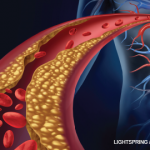What can we as rheumatologists do about it? We can check blood pressure and consider adding a lipid panel and a hemoglobin A1c to routine blood work once a year. If values are abnormal, we can notify relevant providers so they may be addressed. We can encourage smoking cessation and promote maintenance of a healthy weight. We can support active lifestyles and dispel the common myth that exercise will accelerate joint damage and disease. And in the good-and-evil world of electronic medical records, we can create a templated phrase to drop into clinic notes to educate colleagues, as well as patients, of the need for extra vigilance.
Samantha C. Shapiro, MD, is an academic rheumatologist and an affiliate faculty member of the Dell Medical School at the University of Texas at Austin. She received her training in internal medicine and rheumatology at Johns Hopkins University, Baltimore. She is also a member of the ACR Insurance Subcommittee.
References
- Gelfand JM, Neimann AL, Shin DB, et al. Risk of myocardial infarction in patients with psoriasis. JAMA. 2006 Oct;296(14):1735–1741.
- Polachek A, Touma Z, Anderson M, et al. Risk of cardiovascular morbidity in patients with psoriatic arthritis: A meta-analysis of observational studies. Arthritis Care Res (Hoboken). 2017 Jan; 69(1):67–74.
- Ridker PM, Everett BM, Thuren T, et al. Antiinflammatory therapy with canakinumab for atherosclerotic disease. N Engl J Med. 2017 Sep;377(12):1119–1131.
- Nidorf SM, Fiolet ATL, Mosterd A, et al. Colchicine in patients with chronic coronary disease. N Engl J Med. 2020 Nov;383(19):1838–1847.
- Tardif J-C, Kouz S, Waters DD, et al. Efficacy and safety of lowdose colchicine after myocardial infarction. N Engl J Med. 2019 Dec 26;381(26):2497–2505.
- Bouabdallaoui N, Tardif J-C, Waters DD, et al. Time-to-treatment initiation of colchicine and cardiovascular outcomes after myocardial infarction in the Colchicine Cardiovascular Outcomes Trial (COLCOT). Eur Heart J. 2020 Nov 7;41(42):4092–4099.
- Roubille C, Richer V, Starnino T, et al. The effects of tumour necrosis factor inhibitors, methotrexate, nonsteroidal anti-inflammatory drugs and
corticosteroids on cardiovascular events in rheumatoid arthritis, psoriasis and psoriatic arthritis: A systematic review and meta-analysis. Ann Rheum Dis. 2015 Mar;74(3):480–489.
- Initial safety trial results find increased risk of serious heart-related problems and cancer with arthritis and ulcerative colitis medicine Xeljanz,
Xeljanz XR (tofacitinib). U.S. Food & Drug Administration. Drug Safety Communication. 2021 Feb 4. https://tinyurl.com/52yr7ry6.
- Gossec L, Baraliakos X, Kerschbaumer A, et al. EULAR recommendations for the management of psoriatic arthritis with pharmacological therapies:



